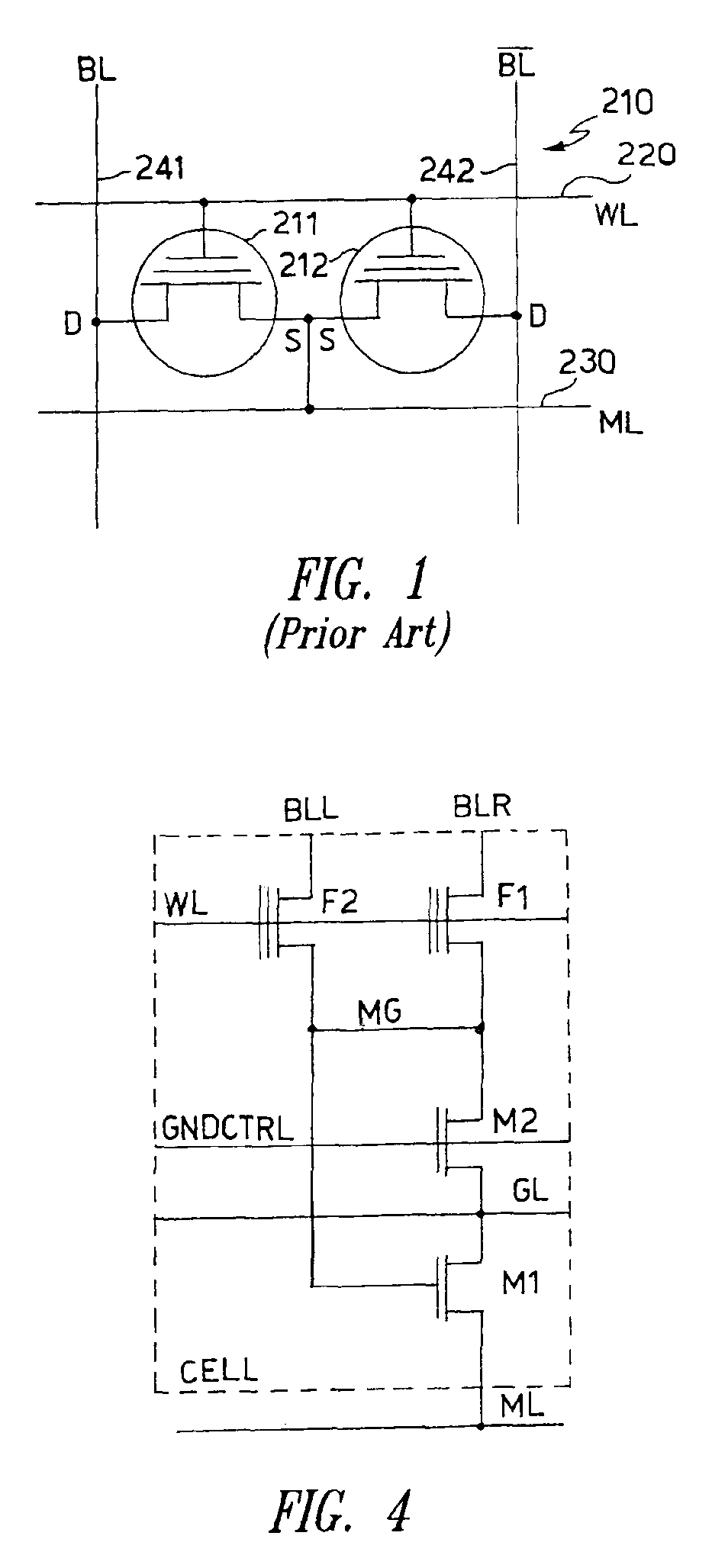Non-volatile NOR-type CAM memory
a cam memory, non-volatile technology, applied in the field of semi-conductor memories, can solve the problems of loss of binary content, difficult detection of non-matches during search, disassembly power, etc., to simplify the circuit structure of memory, simplify the cancellation algorithm, and simplify the search operation.
- Summary
- Abstract
- Description
- Claims
- Application Information
AI Technical Summary
Benefits of technology
Problems solved by technology
Method used
Image
Examples
Embodiment Construction
[0027]As can be seen in FIG. 3, the memory in accordance with the invention comprises a multiplicity of cells CELL ordered in a matrix of m rows and n columns. Each row of the matrix comprises four electric lines, respectively a word line WL1-m, a match line ML1-m, a ground line GL1-m, and a ground control line GNDCTRL1-m, which are connected to a block 10 performing the function of row decoder. Each column comprises two lines, a right-hand bit line BLR1-n and a left-hand bit line BLL1-n, connected to a block 11 performing the function of column decoder and a block 12 performing the function of controlling the search operation. All the cells in the same row are connected to the four lines associated with the row and all the cells in the same column are connected to the two lines associated with the column.
[0028]As can be seen from the circuit diagram of FIG. 4, each cell comprises four transistors: two floating-gate type transistors F1 and F2 with function of non-volatile memory ele...
PUM
 Login to View More
Login to View More Abstract
Description
Claims
Application Information
 Login to View More
Login to View More - R&D
- Intellectual Property
- Life Sciences
- Materials
- Tech Scout
- Unparalleled Data Quality
- Higher Quality Content
- 60% Fewer Hallucinations
Browse by: Latest US Patents, China's latest patents, Technical Efficacy Thesaurus, Application Domain, Technology Topic, Popular Technical Reports.
© 2025 PatSnap. All rights reserved.Legal|Privacy policy|Modern Slavery Act Transparency Statement|Sitemap|About US| Contact US: help@patsnap.com



